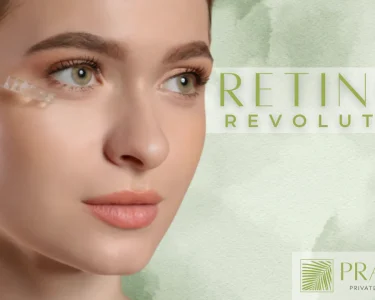Introduction:
Advance Chemical Peel Treatment: Imagine staring in the mirror, frustrated by a complexion trapped under a layer of dullness and roughness. Scrubs, your go-to exfoliation method, seem to offer little improvement, leaving you wondering if there’s a better way to unveil your skin’s hidden radiance. Enter the world of chemical peels, often shrouded in an aura of “advanced” mystery. But what if this “mystery” held the key to unlocking a smoother, brighter, and younger-looking you?While both physical exfoliation (think scrubs) and chemical peels aim to remove dead skin cells, their approaches differ greatly. Scrubs, armed with abrasive particles, battle their way across the surface, potentially leaving behind micro-tears and uneven results. Their reach is limited to the outer layer, often missing deeper concerns like stubborn acne scars or sun damage.
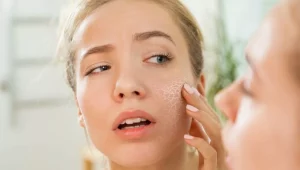
The other hand wield the power of carefully chosen acids. These acids gently dissolve dead skin cells, promoting cell turnover and stimulating collagen production for a firmer, plumper appearance. But beyond the “gentle” facade lies the ability to target specific skin concerns. From AHAs tackling uneven skin tone to BHAs unclogging pores and fighting acne, there’s a peel for every need.Think of it like this: scrubs are like sandpaper, offering a one-size-fits-all approach that can be harsh and unpredictable. Chemical peels are akin to laser-guided tools, precisely addressing concerns while minimizing irritation.Of course, chemical peels aren’t magic wands. Professional guidance is crucial to choose the right peel for your skin type and concerns. Potential side effects like temporary redness or peeling require awareness and proper aftercare.But for those seeking a transformative approach to exfoliation, chemical peels offer a powerful solution. So, ditch the scrub and embrace the “chemical revolution.” With the right knowledge and professional guidance, you can unlock a complexion that truly shines.
Scrub vs. Peel: Unveiling the Mechanisms:
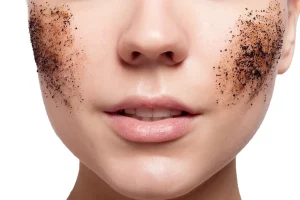
Both physical and chemical exfoliation aim to remove dead skin cells, but their methods couldn’t be more different:
Physical Exfoliation (Scrubs):
- Mechanism: Abrasive particles (sugar, beads, grains) physically buff away dead skin cells on the surface.
- Benefits: Can instantly smooth rough texture, stimulate blood flow, and improve product absorption.
- Drawbacks: Can be harsh and irritating, potentially causing micro-tears and uneven exfoliation. Limited reach, mostly addressing surface dead cells.
Chemical Peels Exfoliation:
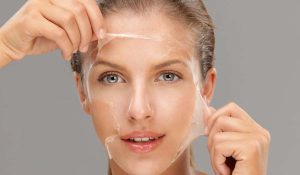
- Mechanism: Acids (AHA, BHA, TCA) dissolve the “glue” holding dead skin cells together, promoting gentle shedding and cell turnover.
- Benefits: Deeper exfoliation targeting various concerns like acne, wrinkles, and pigmentation. Stimulates collagen production for firmer skin. More precise and controlled approach.
- Drawbacks: Requires professional guidance and may have potential side effects like temporary redness or peeling.
Think of it like this: scrubs are like sandpaper, offering a rough and general approach to removing surface debris. Chemical peels are akin to targeted solvents, precisely dissolving dead cells and addressing deeper concerns with minimal damage.
The Scrub’s Dark Side: Potential Drawbacks of Physical Exfoliation
While physical exfoliation, with its trusty scrubs and grains, may seem like a straightforward approach to revealing smoother skin, there are hidden downsides to consider:
Microtear’s and Irritation: Advance Chemical Peel Treatment
Overzealous scrubbing or using harsh particles can damage the skin’s protective barrier, leading to tiny tears and inflammation. This is especially risky for sensitive skin, causing redness, dryness, and even increased sensitivity.
Uneven Exfoliation:

Applying uneven pressure or using large, irregular particles can result in patchy exfoliation, leaving some areas over-exfoliated and others untouched. This can further disrupt the skin’s natural barrier and create an uneven complexion.
Limited Reach:
Scrubs primarily target the surface layer of dead skin cells. While this improves texture temporarily, it doesn’t address deeper concerns like clogged pores, acne scars, or sun damage. These issues often require a deeper level of exfoliation that scrubs alone can’t provide.
Increased Oil Production: Advance Chemical Peel Treatment
Over-exfoliation with scrubs can strip the skin of its natural oils, triggering the body to overcompensate by producing even more oil. This can lead to breakouts and an oily complexion, creating the opposite of the desired effect.
Sensitivity to Other Products: Chemical peels
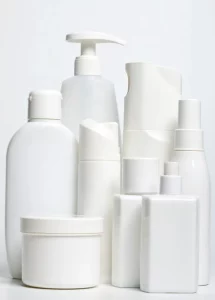
Exfoliated skin is more vulnerable to other skincare products. Using harsh scrubs before applying actives like retinol or AHAs can lead to increased irritation and discomfort.
Risk of Spreading Bacteria: Advance Chemical Peel Treatment
Improperly stored or cleaned scrubs can harbor bacteria, potentially leading to breakouts or infections, especially for those with acne-prone skin.
Remember, a gentler approach is often better when it comes to exfoliation. While scrubs can offer temporary benefits, understanding their potential drawbacks can help you make informed choices for healthier, more radiant skin.
Microtears and irritation:
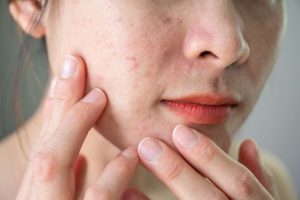
Imagine your skin barrier as a protective fortress, guarding against environmental aggressors and maintaining optimal hydration. Now, picture a battering ram in the form of a harsh scrub, repeatedly pounding against this delicate shield. That’s what happens when you over-exfoliate with abrasive particles, leading to microscopic damage that can have long-term consequences.
Here’s how harsh scrubs wreak havoc on your skin barrier:
Micro-Tears:
Imagine tiny scratches appearing on your fortress walls. That’s what happens when large, sharp particles in scrubs physically scrape away dead skin cells, often taking healthy cells along for the ride. These micro-tears compromise the barrier’s integrity, leaving your skin vulnerable to irritants, bacteria, and dehydration.
Stripping Away Essential Lipids: Advance Chemical Peel Treatment
Think of the mortar holding your fortress bricks together. In your skin, lipids play a similar role, holding skin cells together and forming a waterproof layer. Harsh scrubs can disrupt these lipids, creating cracks and gaps in the barrier. This leads to increased water loss, leaving your skin dry, flaky, and vulnerable to irritation.
Weakened Defense Mechanisms: Advance Chemical Peel Treatment
Your skin barrier also houses your immune system’s frontline soldiers. By damaging the barrier, harsh scrubs weaken these defenses, making you more susceptible to infections, inflammation, and allergic reactions.
Altered pH Balance:
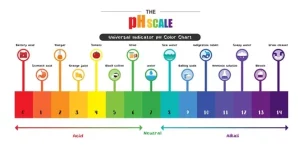
Healthy skin maintains a slightly acidic pH, crucial for optimal barrier function. Harsh scrubs can disrupt this delicate balance, leaving your skin more susceptible to bacterial growth and further irritation.
Impaired Barrier Repair:
Normally, your skin continuously repairs itself. However, constant micro-aggressions from harsh scrubs can overwhelm this repair process, leaving your barrier weakened and vulnerable to ongoing damage.
The Consequences: Advance Chemical Peel Treatment
The damage caused by harsh scrubs can manifest in various ways, including:
- Increased sensitivity: Your skin feels itchy, tight, and reacts poorly to even mild products.
- Dryness and flaking: Loss of essential moisture disrupts the skin’s natural balance, leading to dehydration and peeling.
- Inflammation and redness: Disrupted barrier function allows irritants to penetrate, triggering inflammatory responses.
- Premature aging: Weakened barrier protection leaves skin exposed to environmental damage, accelerating signs of aging like wrinkles and hyperpigmentation.
Remember:
Exfoliation is necessary, but it should be done gently and thoughtfully. Opt for chemical peels under professional guidance or choose softer physical exfoliants with rounded particles. Listen to your skin, and prioritize its health over the immediate gratification of aggressive scrubbing. By respecting your skin’s natural defenses, you pave the way for a healthy, resilient, and radiant complexion.
Limited Reach:
Imagine dead skin cells piling up like layers of dust on your floor. Scrubs, like a broom, can sweep away the top layer, momentarily revealing a brighter surface. However, they lack the “reach” to penetrate deeper skin layers where more stubborn concerns reside.
Acne & Clogged Pores: Chemical peels:
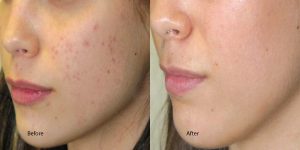
Think of blackheads and whiteheads as stubborn dirt embedded deep within the floorboards. Scrubs simply skim the surface, leaving clogged pores and blemishes largely untouched. While they may temporarily reduce the appearance of breakouts, they don’t address the root cause of acne, which often lies deeper within the pore.
Fine Lines & Wrinkles: Chemical peels
Imagine fine lines and wrinkles as cracks in the floorboards. Scrubs can’t erase these deeper imperfections by simply cleaning the surface. While they may offer temporary plumping, they lack the ability to stimulate collagen production or target the deeper layers where these concerns originate.
Sun Damage & Hyperpigmentation: Advance Chemical Peel Treatment
Think of sun damage and hyperpigmentation as stains ingrained into the floorboards. Scrubs won’t bleach or fade these deeper issues, as they lack the targeted ingredients needed to address pigment concerns within the skin.
Scarring:
Imagine scars as permanent dents in the floorboards. Scrubs cannot physically repair deeper tissue damage, like acne scars or other forms of scarring. While they may slightly smoothen the surface texture, they lack the ability to address the underlying scar tissue itself.
The Missing Piece:

This is where chemical peels offer a game-changer. They act like specialized cleaning solutions, gently dissolving dead skin cells at various depths and tackling concerns beyond the surface:
- AHA peels reach deeper than scrubs, addressing uneven skin tone, fine lines, and mild acne.
- BHA peels penetrate even deeper, unclogging pores and targeting acne at its source.
- TCA peels reach the deepest layers, addressing sun damage, hyperpigmentation, and deeper wrinkles.
Remember:
While scrubs offer immediate gratification, they’re a surface-level solution. By understanding their limitations and exploring deeper exfoliation options like chemical peels under professional guidance, you can unlock a path to truly transformative results.
Conclucion:
So, should you ditch the scrub entirely? Not necessarily. For occasional use on non-sensitive skin, scrubs can offer a temporary boost in texture and circulation. However, when it comes to addressing deeper concerns and achieving long-lasting results, it’s time to embrace the “chemical revolution.”
Remember, chemical peels aren’t magic potions. They require professional guidance, careful selection based on your skin type and needs, and proper aftercare.


